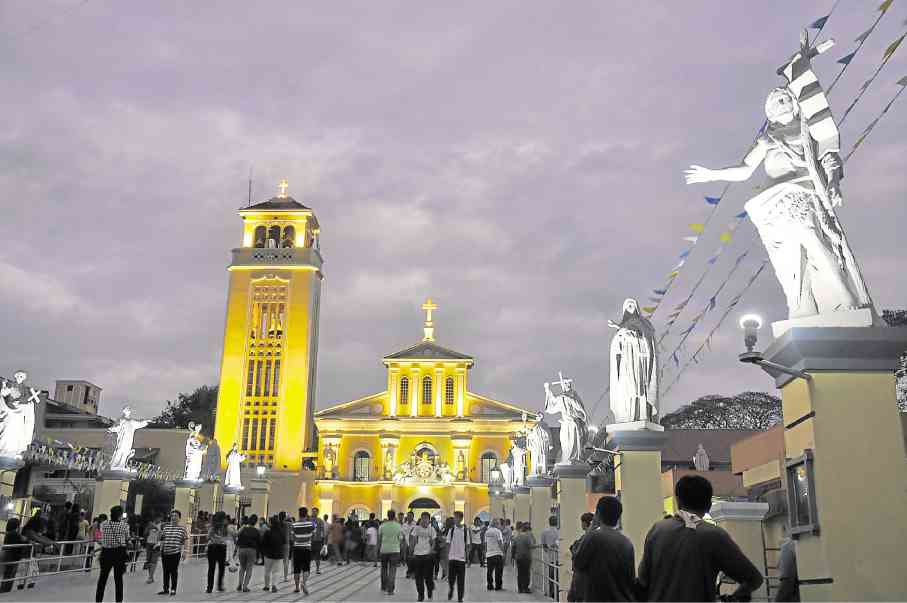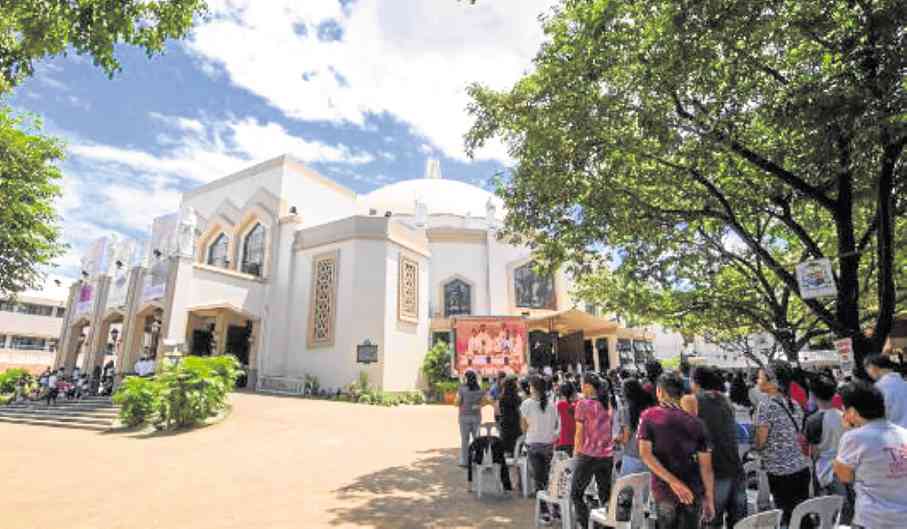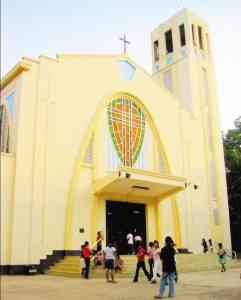Historical churches for semana santa
A traditional practice among devout Catholics is to go on a Visita Iglesia (Spanish for “church visits”) during the Holy Week.
Usually, they start visiting seven to 14 churches on Holy Thursday
following the evening Mass of the Lord’s supper, and after the procession to transfer the Holy Eucharist to the Altar of Repose inside or outside the church. The faithful, during Visita Iglesia, visit either the Altar of Repose or the Stations of the Cross in the church.
Here are some notable and historical churches around the country that pilgrims can visit this coming Holy Week.
Minor Basilica of Our Lady of the Rosary
Manaoag, Pangasinan
Minor Basilica of Our Lady of the Rosary of Manaoag was venerated due to an apparition there of the Virgin Mary 400 years ago.
A centuries-old ivory image of the Virgin Mary is enthroned at the high altar of the church and is said to possess miraculous powers.
The church started as a modest parish in 1605 and it was only in 1701 that a big church was constructed. After an earthquake and a revolution destroyed the old structures, the construction of the current church was completed in 1912. In October 2014, the church was proclaimed a Minor Basilica by Pope Francis.
Cathedral of the Immaculate Conception of Antipolo
Antipolo City, Rizal
The Antipolo Cathedral enshrines the Marian image of Our Lady of Peace and Good Voyage and is the seat of the Bishop of Antipolo.
It was declared as National Shrine in January 1954 by the Catholic Bishops’ Conference of the Philippines and was elevated to the status of cathedral in June 1983, upon the canonical erection of the Diocese of Antipolo. The church received a national historical marker in 1937.
It is a popular pilgrimage destination for travelers who pray for safe voyage, especially for Overseas Filipino Workers (OFWs), and during Lenten Season. The annual “Alay Lakad” where people troop on foot to Antipolo City every Maundy Thursday is still a popular practice to this day.
National Shrine of Padre Pio
Sto. Tomas, Batangas
The national shrine was dedicated to Italian priest and miracle worker St. Padre Pio of Pietrelcina, who is remembered today as one of the few people in history to have received the stigmata, or the wounds of Christ, and who was canonized in 2002 by Pope John Paul II.
The church is popular for its nature and eco-friendly design. Wood, stone, and bamboo define the Filipino character of the structure. It was declared an archdiocesan shrine in 2008 was elevated to a national shrine in 2015.
In 2010, the church received two special relics of St. Padre Pio from Fr. Ermelindo Di Capua. These have become a focus of devotion among the faithful.
Immaculate Conception of the Virgin Mary Parish Church
Baclayon, Bohol
It was first built in 1596, making it the second oldest church in the Philippines after San Agustin in Intramuros.
The current structure, made from coral stone cut from the sea by some 200 native laborers, was completed in 1727.
In 2010, the church complex was declared a National Cultural Treasure, which pertains to “a unique cultural property found locally, possessing outstanding historical, cultural, artistic and/or scientific value which is highly significant and important to the country and nation.”
During the October 2013 earthquake, its portico and bell tower collapsed and has since been undergoing restoration to bring it back to its former glory.
Jaro Cathedral
Jaro, Iloilo
On orders of Bishop Mariano Cuartero, the first cathedral was built in 1874 before it was destroyed by an earthquake in 1948. Its reconstruction was handled by Jaro’s first archbishop, Msgr. Jose Maria Cuenco.
In 2012, Jaro Cathedral was declared the National Shrine of Our Lady of the Candles by the Catholic Bishops’ Conference of the Philippines.
It has the Candelaria, the only Marian image in the Philippines canonically crowned by St. John Paul II when he visted Iloilo on Feb. 21, 1981.
Nuestra Señora de Regla Parish National Shrine
Lapu-Lapu, Cebu
The national shrine of the Virgin of the Rule or Birhen sa Regla is found in Lapu-lapu (Opon) in the historic island of Mactan. Devotees may go up to the sanctuary at the back and kiss the precious relic donated in 1908 by the Apostolic delegate Monsignor Agius.
The image of the Virgen de la Regla in the shrine received canonical blessing in 1954.
Construction of the original church made of Mactan coral stone cuts took place between 1735 to 1744 after the people of Opon chose Our Lady of the Rule to be their patroness.
The church received minor damages during World War II and was torn down and replaced with a new church in 1960. The 1855 convent, however remains intact.
Monastery of Transfiguration
Malaybalay City, Bukidnon
The monastery is a popular destination for the faithful both for religious and for aesthetic reasons.
Designed by the late National Artist for Architecture Leandro Locsin, the unique design and location of the monastery on a hill where agricultural products grow make it an ideal place for scenery and retreat.
But most importantly, the monastery is a place of guidance and peace that offers people the solitude and peaceful ambiance needed for prayers. The calming voices of Benedictine monks chanting their prayers also provide one of a kind of spiritual environment.
Source: Inquirer Archives, gov.ph, https://manaoagbasilica.org, CBCP news, choosephilippines.com




